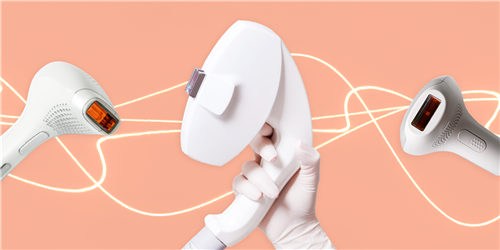
Everything You Need To Know About Laser Hair Removal Before Your Appointment
05/03/2022Of all the hair removal methods currently available to us—you know, shaving, waxing, sugaring—laser hair removal might be the most misunderstood. Over the years, the hair removal method—which, put simply, uses light to destroy hair follicles at the root—has gained a reputation for being painful (most people compare it to being snapped with a rubber band) and expensive. But its convenience in comparison to the others can’t be denied.
Shaving, while always be a tried-and-true classic, doesn’t yield long-lasting results and can sometimes leave skin burdened with ingrown hairs if done incorrectly. A wax can last you up to three weeks, but it can be painful and cause redness, irritation, or burns when not performed properly. Laser hair removal, on the other hand, typically requires you to consistently attend a handful of sessions that last no longer than 30 minutes, and while it’s not technically permanent, it does reduce the amount of hair growth you’ll see in the area over time.
You should always consult a professional to determine if any treatment is right for you, but if you’re thinking of trying laser hair removal (or if you’ve already scheduled your first session), here’s everything you need to know about the treatment before you step in the room.
What is laser hair removal?
Laser hair removal is commonly referred to as one of the most effective ways to go about removing unwanted hair from your body. “Hair removal lasers target melanin pigment in the hair with specific wavelengths of light energy,” Shauna Ryder Diggs, MD, tells WH. “The energy heats the hair quickly and powerfully then the heat spreads to the hair root, destroying it.”
You can get laser hair removal done on most areas of the body, though according to Scott Callahan, PA-C and founder of Dolce Vida Medical Spa, areas with coarse hair will see the best results.“The bikini line, upper lip, chin, and sideburns all see great results, but some require maintenance treatments,” says Callahan. “That’s because it doesn’t work as well on fine hair.”
Still, the entire process comes with a few benefits. Aside from it leaving you virtually hairless, laser hair removal is also one of the best treatment options for people who tend to get a lot of ingrown hairs on their face, neck, underarms, and/or bikini area. “It softens and shrinks the hair, preventing the hair tip from turning into the skin, causing tender bumps, dark spots and scars,” Dr. Diggs says.
How long does laser hair removal last?
Years ago, you might have needed 10 or more sessions, plus upkeep treatments, to combat your hair growing back, but lasers have come a long way since then. These days, most people will be left hairless after an initial round of laser hair removal treatments and minimal follow-up, thanks to advancements in technology.
“There is a potential for permanent results, and many people require infrequent touch-ups,” says Estee Williams, MD. “In-office lasering is the only treatment that comes close to a full claim of permanent, long-lasting hair reduction because it attacks the hair deep in the follicle, whereas other treatments cut the hair mid-shaft.”
Hormonal changes, like the ones you experience during pregnancy, however, can bring on new, unwanted hair growth. So if you have a baby, don’t be surprised if you discover some patches of hair even you’ve already gone through a round of laser treatments long ago.
Who is a good candidate for laser hair removal?
When laser hair removal was first introduced, it worked best on light skin, though the treatment is now effective on all skin types. “At one time, hair removal lasers didn’t work so well for people with medium to dark skin,” says Dr. Williams, who uses the Lumenis LightSheer device on patients in her practice. “Now, awareness around inclusivity and advances in technology have allowed for some of these same women to experience hair removal via laser.”
Not only is it now available for people of all skin types, but it’s also proven to be safe and effective as well. “In early years the lasers couldn’t treat darker skin types because there was a risk of burns, but the new technology allows us to perform the treatment on all skin types,” says Callahan.
Although the treatment is definitely more inclusive now, it still isn’t for everyone. If you have very light hair, you might not get the results you’re after. “In over 20 to 30 years there have been many studies trying to treat blonde hair, white hair, and gray hair,” says Callahan. “None of them have worked.”
How much does laser hair removal typically cost?
How much any professional treatment costs ultimately depends on where you go and who you entrust to do the job, but according to Dr. Diggs, one session can range anywhere from $199 to $599. This also depends on what area(s) of the body you plan on treating, as providers typically charge more per session for larger areas of the body.
While the price tag on laser hair removal may seem a little steep, it ends up ultimately being a cheaper option in the long run than, say, getting a wax once a month or every three weeks.
How many laser hair removal sessions will I need?
“I’d say 50 percent of patients are done after four treatments while 100 percent are done after eight,” says Callahan. And according to Paul Jarrod Frank, MD, founder of PFRANKMD, patients are seeing results much quicker than they used to. The key to destroying the hair for good? Making sure you’re consistently booking your treatments at four-week intervals. “Longer than that could delay results,” Dr. Frank says.
How should I prepare for my laser hair removal appointment?
Prepping for your treatment can start up to a week before and may entail switching out some of your favorite skincare and body products for the time-being. “Pay attention to what you put on your skin once you’ve scheduled a treatment,” says Dr. Williams. She says to stop using the following active ingredients at least five days before your appointment: glycolic and salicylic acids, benzoyl peroxide, and retinoids like tretinoin and adapalene.
You should also try staying out direct sunlight. “Avoid the sun entirely or, at the very least, use proper sun protection,” says Dr. Williams. “Proper protection means using broad spectrum SPF 30 or higher. Tinted moisturizer or foundation with SPF isn’t adequate.”
Another thing to avoid? Once you’ve set a date for your first treatment, hold off on your usual hair-removal routine if it involves removing hair from the root. “The laser is attracted to the follicle pigment, so you should not wax,” says Dr. Frank. That goes for plucking and tweezing as well.
What you should do though is shave the night before your appointment so that the laser can focus just on the root of your hair, without getting sidetracked by length.
What should I expect after my laser hair removal appointment?
“Immediately after treatment, you’ll notice mild redness and swelling just around the hair follicle (think pink goosebumps), which is actually the desired endpoint and predicts a great response,” says Dr. Williams. “This can last up to 24 hours.”
Although some patients still compare the discomfort during the session to the feeling one gets when being snapped with a rubber band, the speed of the treatment certainly minimizes any discomfort. “The major difference with the new technology is that it’s much, much faster, so patients don’t need to endure discomfort for long,” says Callahan. “You can essentially remove all of the hair from the back in five minutes.”
Is at-home laser hair removal safe?
Yes, but it may not be as effective as an in-office treatment. “At-home laser hair removal is safe, particularly in lighter skin tones but not always for darker skin tones,” Dr. Diggs says. “It is effective for temporary hair removal but tends to not reach the higher energy levels needed for more long-term hair removal.”
Source: Read Full Article


